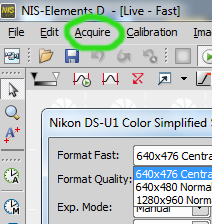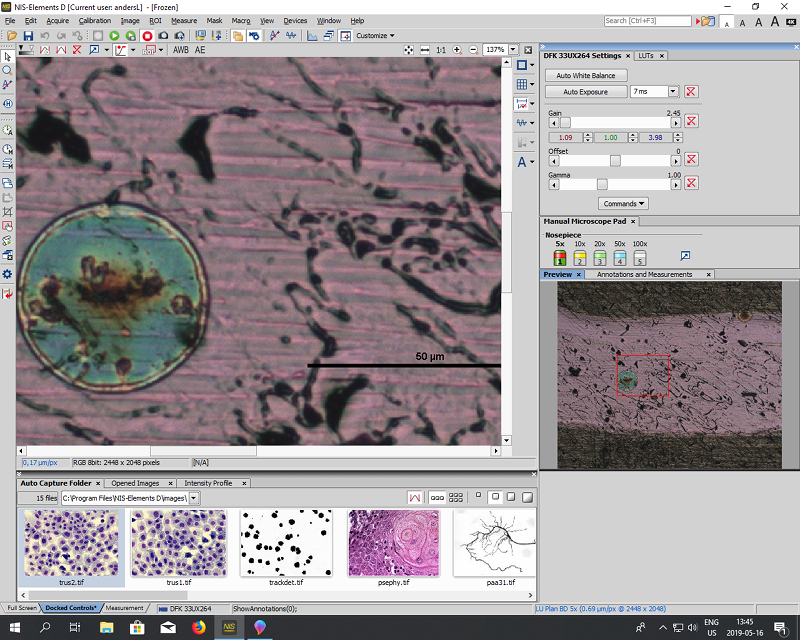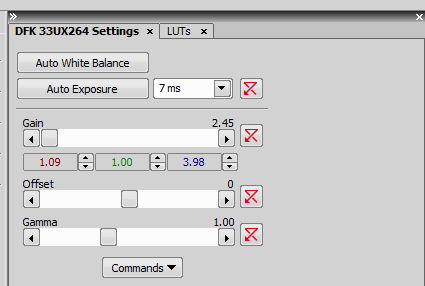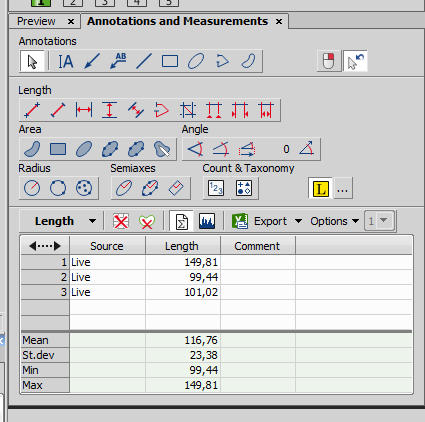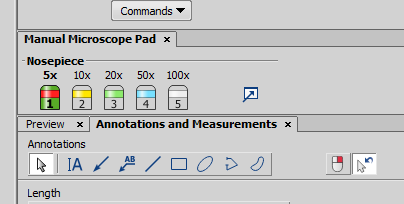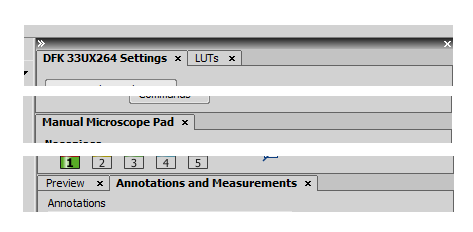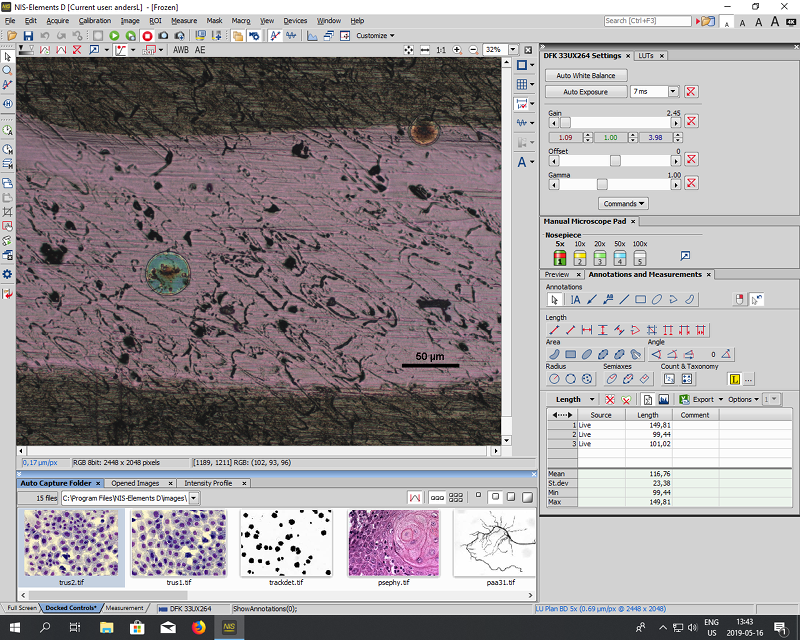
|
It is a "one window" GUI, with several parts. At the top are
the drop down menues, below that a row of function buttons. At the left side
there are another set of function buttons for zoom, measure, crop,
settings, etc.
To the right are exposure controls, objective selection, measurement functions with export functionality. At the bottom is an overview of already saved pictures. |

